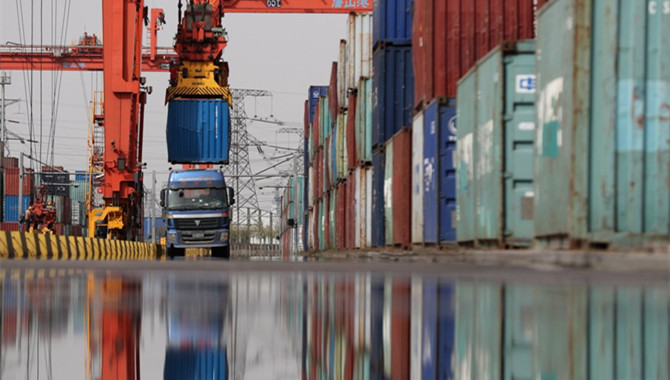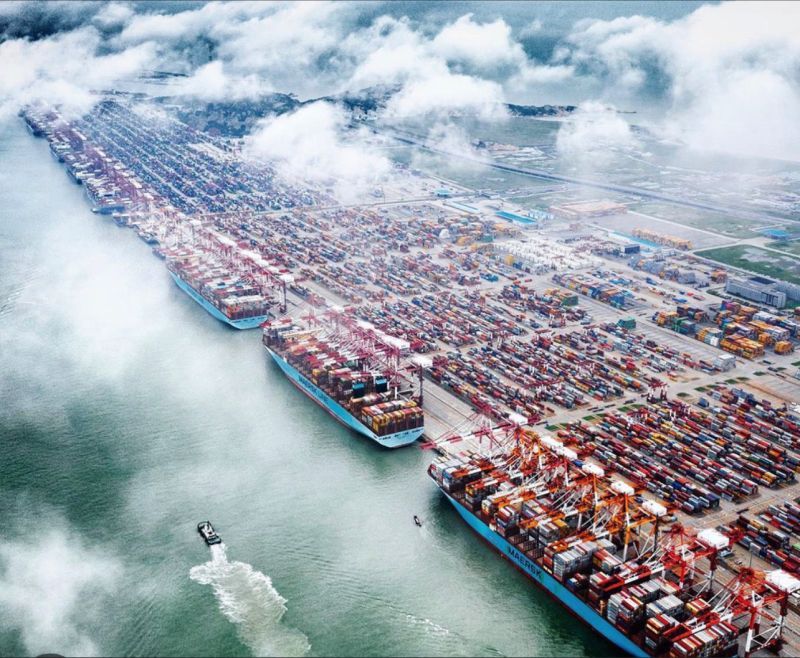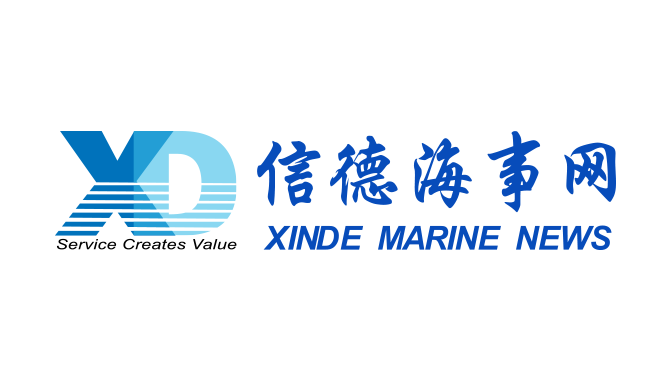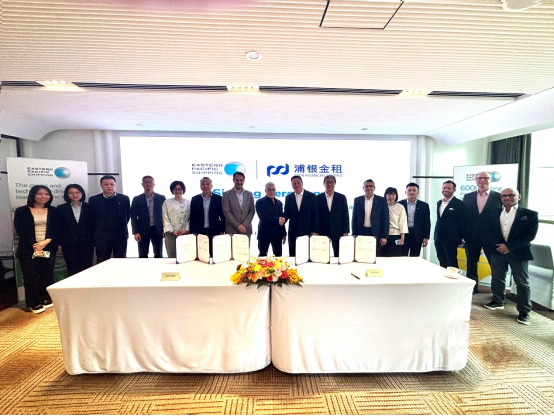The global port and water transportation industry has been greatly impacted by the COVID-19 pandemic. However, thanks to good epidemic prevention and control, as well as the nation's manufacturing advantages, China's major ports have seen increased throughput and made great progress on digital and intelligent construction, playing a leading role in the intelligent development of ports globally.
China now leads the world in the number of automated terminals both built and under construction, according to the Ministry of Transport. In line with the growth in scale, China has formed a development path in which the reconstruction of new wharves and traditional wharves go hand in hand, with various technological routes taken simultaneously.
Since the first pile was laid in December 2019, it took only 33 months for China to build the smart zero-carbon terminal of Tianjin Port from a deserted beach, with the operating efficiency of the single bridge increasing by more than 40 percent, and the personnel allocation reduced by 60 percent compared with that of the traditional terminal.
At the fourth phase of the Shanghai Yangshan Deep Water Port, the remote-control distance of equipment exceeds 100 km. At the automated port terminal in Qingdao, Shandong Province, 16 automated bridge cranes and 76 automated track cranes run smoothly, and 83 automatic guided vehicles shuttle back and forth. These are the latest achievements in the construction of smart terminals in China in recent years.
Mi Weijian, a professor at Shanghai Maritime University, said that although China started the construction of smart ports relatively late, favorable policies have been released successively in recent years.
Coupled with the continuous investment of domestic ports and a large number of high-tech enterprises, the concept and practice of smart port construction have been innovative, Mi said, adding that the level of intelligence of Chinese ports is already at the forefront of the world, playing a leading and exemplary role in the intelligent development of global ports.
Wang Yusheng, deputy general manager of Shandong Port Science and Technology Group, said that before the integration of Shandong ports, all ports were state-owned enterprises operating independently, with an unbalanced level of information development and varied technical routes, and the data-island phenomenon was a serious issue.
Since 2020, the group has cooperated with other enterprises to upgrade existing facilities in Shandong into a fully automated waterfront container terminal, reducing the overall costs by 70 percent compared with newly built terminals.
"Now we have traditional terminals, semi-automatic terminals and fully automatic terminals," Wang said. "The loading and unloading of a ship can be done in three different kinds of terminals, which maximizes the integration of terminal resources."
Source: Xinhua
The opinions expressed herein are the author's and not necessarily those of The Xinde Marine News.
Please Contact Us at:
media@xindemarine.com


 China’s First Bulk Bunkering of Domestic Green Me
China’s First Bulk Bunkering of Domestic Green Me  Rotterdam and Singapore Strengthen Collaboration on
Rotterdam and Singapore Strengthen Collaboration on  MPA and CMA CGM Sign MoU to Enhance Sustainable Shi
MPA and CMA CGM Sign MoU to Enhance Sustainable Shi  China's Ports Surge Ahead: Major Container Terminal
China's Ports Surge Ahead: Major Container Terminal  Port of Hamburg: Growth in container throughput and
Port of Hamburg: Growth in container throughput and  EPS and SPDB Financial Leasing sign financing agree
EPS and SPDB Financial Leasing sign financing agree